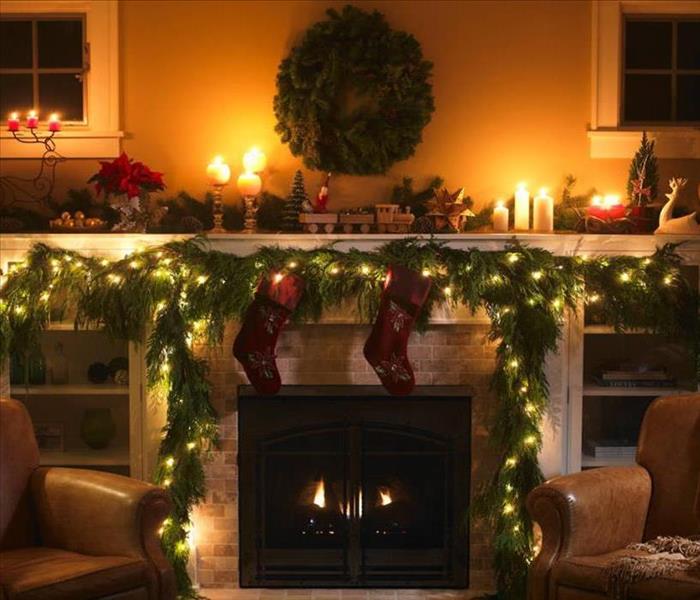Archived Blog Posts
Calgary Commercial Water Damage
6/21/2019 (Permalink)
 Commercial buildings are not free from the dangers of water damage.
Commercial buildings are not free from the dangers of water damage.
When speaking with local Calgary business owners and property managers in regards to potential water damage situations, the knee-jerk reaction is to picture a massive storm, flooding offices, and shutting down businesses for days to weeks. It is true that commercial water damage is often the result of floods, which we saw in 2013, but living in Calgary storms of that degree are very rare.
However commercial water damage in Calgary can happen all year but is usually focused in the fringe seasons, when the weather switched from hot to cold and vice-versa, and it can drastically affect the operation of your business. Here are some of usual culprits of water damage to commercial buildings.
- Faulty sprinkler systems
Some offices and retail buildings still have old and outdated sprinkler systems that work together with fire protection systems. When a fire happens, these sprinklers are very useful in limiting damage, but they can also cause commercial flood damage if they are defective or in need of replacement.
2. Damaged equipment
This cause of commercial water damage is more common in businesses that use appliances and equipment that make use of water, such as restaurants. If the appliance fails and sends water throughout your building, you will face a water emergency. This can be extra damaging if it occurs after hours and is left alone for long periods of time.
3. Broken pipes and plumbing
Just like in a house, if the plumbing system in your property fails water damage could be the result. Bursting pipes are a regular occurrence in Calgary with our fluctuating weather patterns that can result in pipes freezing and thawing out rapidly.
4. Sewer Backups
One last cause of commercial water damage that often catches business owners by surprise, is the sewer backup. Should the sewer or sump pump to your building back up or become damaged it can result in Black Water rising into your building. Contaminated Black Water can cause adverse health effects and ruin products and office furnishings. SERVPRO of Calgary South has certified IICRC technicians that specialize with this type of water damage.
If your business has suffered commercial water damage, SERVPRO of Calgary South will get you and your business back up and running again. Call us anytime at (403) 255-0202!
The SERVPRO® Emergency READY Profile
6/19/2019 (Permalink)
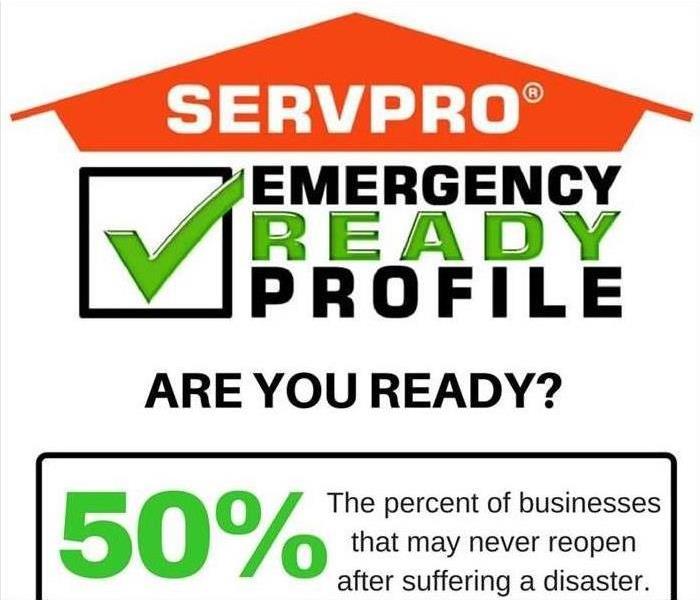 Call us today to get started with a personalized Emergency READY Profile.
Call us today to get started with a personalized Emergency READY Profile.
Disasters can strike your business at any time, whether it is a pipe bursting, a fire occurring, or mould growing. It has been estimated that up to 50% of businesses may never open their doors again after a disaster happens. One tool that SERVPRO of Calgary South can provide to you to help you avoid this unfortunate conclusion is to be prepared, with our SERVPRO® Emergency READY Profile (ERP).
Being prepared is an integral component in responding to a disaster of any size, from the smallest leak to a basement full of water. A well-constructed plan reduces the time and stress required to make it through a disaster and the best time to make a plan is well in advance. It is always better to plan for “when” instead of “if”.
The SERVPRO® Emergency READY Profile is the first step that provides the critical information needed to begin mitigation and recovery services. It is designed to serve as a quick reference of important building and contact information.
By working with SERVPRO of Calgary South and developing a personalized ERP you will take the Proactive > Reactive approach. Get your facility on the right track to dealing with disaster! Call Us Today 403-255-0202
SERVPRO's Backyard Fire Safety
6/17/2019 (Permalink)
 Please follow these backyard firepit safety tips to ensure your evening is safe and fun.
Please follow these backyard firepit safety tips to ensure your evening is safe and fun.
Nothing beats sitting around the backyard firepit with your family and friends swapping stories and roasting marshmallows. SERVPRO of Calgary South and the City of Calgary have a few tips and tricks to make your fire safe and fun for you and your community.
Calgary By-law firepit hours: 10 am – Midnight (until 1 am on Friday and Saturday)
- Always check to see if there is a fire ban in effect. Lately we have seen Alberta face many wildfires and fire bans are for everyone’s safety.
- Know who to call.
- 3-1-1 = to report a complaint about a backyard fire (noise, size, etc.)
- 9-1-1 = to report an out of control fire.
- Backyard firepits should be built on a flame-resistant surface such as the ground, brick, or stone. Portable firepits should never be placed directly on a wooden deck.
- Firepits should be at least 2 meters (about 6 feet) away from your property line and any structures (garage, house, tree, etc.)
- Keep fires to a reasonable and manageable size and use a mesh screen to reduce flying embers and the spreading of sparks.
- Only burn clean/dry wood. Do not burn painted or treated wood, wet/green wood, backyard waste, grass clippings, garbage. Only burn wood from Alberta, never transport wood across borders to reduce the spread of disease and parasites.
- Do not leave a fire unattended and always have an extinguish strategy close by (a bucket of water or a garden hose will work).
- Be courteous to your neighbours. Watch where your smoke is going and be wary of your noise levels, quiet hour in Calgary is 10 pm.
For more please visit the City of Calgary’s website @ https://www.calgary.ca/CSPS/Fire/Pages/Safety-tips/Safety-tips-home/Fire-pits.aspx
SERVPRO's Tips For Your Calgary Summer BBQ
6/15/2019 (Permalink)
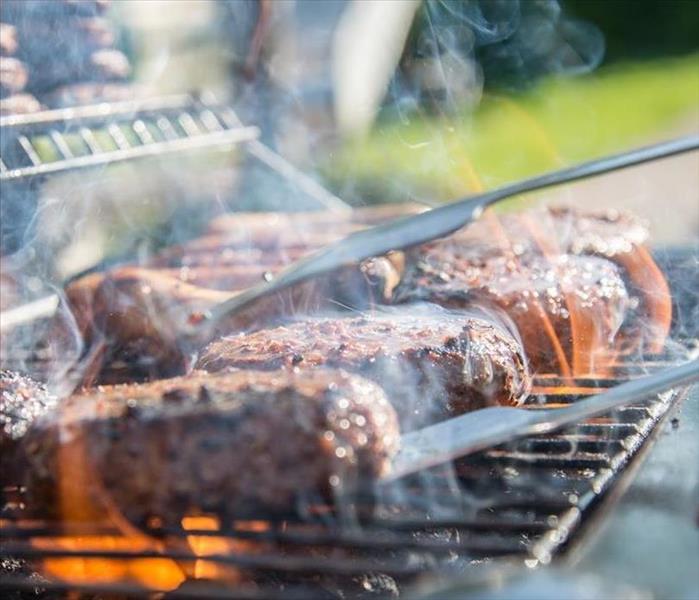 Summertime in Calgary, BBQ tips
Summertime in Calgary, BBQ tips
Calgary, it is finally time to get back outside and turn on that barbecue. Here are a few safety tips to keep you and your grill in tiptop shape.
- Keep you barbecue at least 3 meters (10 feet) away from any structures, this includes your house, garage, carport, patio, or any sheds.
- Clean you grill frequently, grease and fat inside your barbecue can flare up and create bursts of flames. If there is a build up of fat from past grills, this can ignite and provide more fuel for the flame. A clean grill is a happy grill.
- Check all connections and hoses for leaks. Make sure there are no gas leaks from source to flame. You can check the hose and all connections by mixing dish soap with water and wiping it on the hose/connections. Open your BBQ lid and turn on the gas, if any bubbles form that is a tell-tale sign of a leak. Fix/replace any leaks before use.
- Remove clutter from the immediate area. Decorations or Knick-Knacks can ignite from flare ups and add more fuel to the fire. This tip also includes the grill itself, do not overload the BBQ with food, as more drippings increase the chance of larger flare ups.
- Keep a fire extinguisher close by in case a fire gets out of control. If you are unsure how to use a fire extinguisher an emergency is not the time to learn, Call 911 first.
- Never turn on the gas while the lid is closed. This can create a buildup of flammable gas that when lit can cause a large flame that you may not be expecting (your eyebrows will thank you for this one).
- Do not leave you BBQ unattended. Fire grows at a surprising rate, always keep a watchful eye on your grill to limit any surprises.
- Be safe and enjoy!
For more tips and suggestions you can visit the Government of Canada’s website @ https://www.canada.ca/en/health-canada/services/home-garden-safety/barbecue-safety.html
SERVPRO of Calgary South, Smoke and Soot Info
6/10/2019 (Permalink)
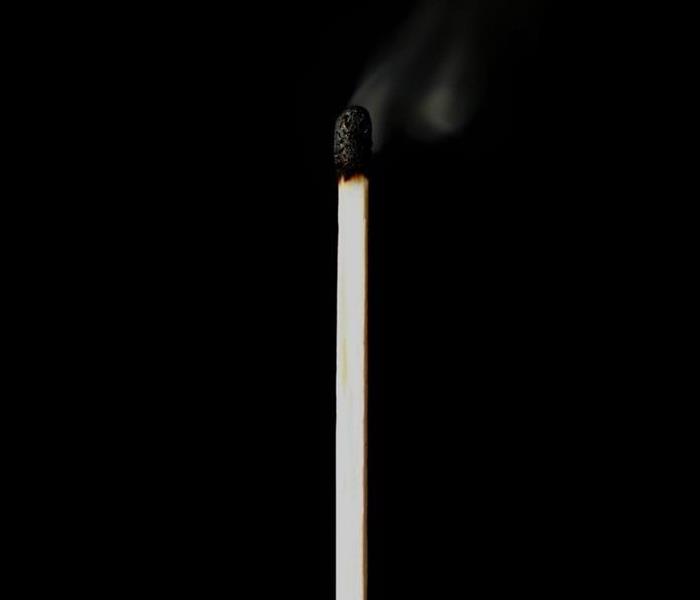 Smoke damage can make restoring a property extremely difficult, but we can do it!
Smoke damage can make restoring a property extremely difficult, but we can do it!
Smoke and soot are very invasive and can penetrate various cavities within your home, causing hidden damage and odour. Our smoke damage expertise and experience allows us to inspect and accurately assess the extent of the damage to develop a comprehensive plan of action.
Smoke and soot facts:
- Hot smoke migrates to cooler areas and upper levels of a structure.
- Smoke flows around plumbing systems, seeping through the holes used by pipes to go from floor to floor.
- The type of smoke may greatly affect the restoration process.
Different Types of Smoke
There are two different types of smoke–wet and dry. As a result, there are different types of soot residue after a fire. Before restoration begins, SERVPRO of Calgary South will test the soot to determine which type of smoke damage occurred. The cleaning procedures will then be based on the information identified during pretesting. Here is some additional information:
Wet Smoke – Plastic and Rubber
- Low heat, smoldering, pungent odour, sticky, smeary. Smoke webs are more difficult to clean.
Dry Smoke – Paper and Wood
- Fast burning, high temperatures, heat rises therefore smoke rises.
Protein Fire Residue – Produced by evaporation of material rather than from a fire
- Virtually invisible, discolors paints and varnishes, extreme pungent odour.
Our Fire Damage Restoration Services
Since each smoke and fire damage situation is a little different, each one requires a unique solution tailored for the specific conditions. We have the equipment, expertise, and experience to restore your fire and smoke damage. We will also treat your family with empathy and respect and your property with care.
Have Questions about Fire, Smoke, or Soot Damage?
Call Us Today! 403-255-0202
Be Thunderstorm Ready: What to do Before, During, and After Thunderstorms
5/6/2019 (Permalink)
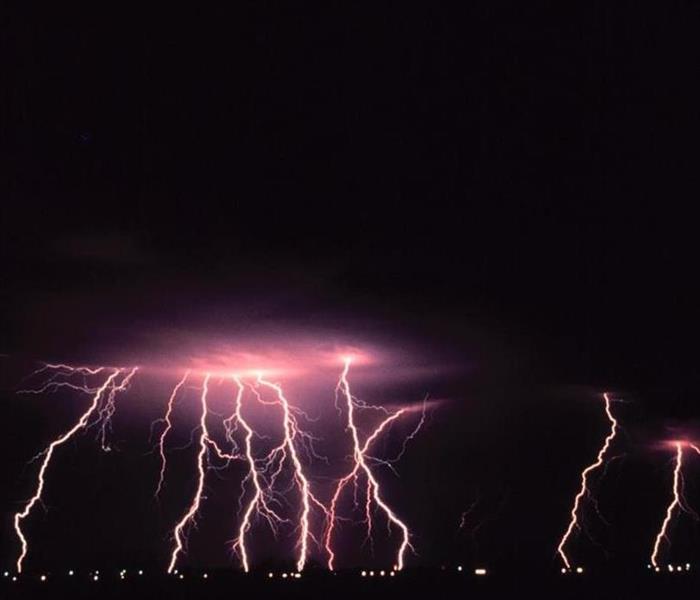 Calgary Thunder Storm
Calgary Thunder Storm
All storms are dangerous and thunderstorms are no exception. Every thunderstorm produces lightning and other hazardous weather conditions, which can include tornadoes, strong winds, hail and flash flooding.
In Western Canada we tend to get a mix of heavy rain and dry thunderstorms, those storms do not produce rain that reaches the ground. As the raindrops fall they are evaporated, with that said the storms lightning can still reach the ground and can start wildfires. Below are great tips from READY to help prepare you for what to do before, during and after a thunderstorm.
What to do before a thunderstorm
To prepare for a thunderstorm, you should do the following:
- To begin preparing, you should build an emergency kit and make a family communications plan.
- Remove dead or rotting trees and branches that could fall and cause injury or damage during a severe thunderstorm.
- Postpone outdoor activities.
- Secure outdoor objects that could blow away or cause damage.
- Get inside a home, building, or hard top automobile (not a convertible). Although you may be injured if lightning strikes your car, you are much safer inside a vehicle than outside.
- Remember, rubber-soled shoes and rubber tires provide NO protection from lightning. However, the steel frame of a hard-topped vehicle provides increased protection if you are not touching metal.
- Shutter windows and secure outside doors. If shutters are not available, close window blinds, shades or curtains.
- Unplug any electronic equipment well before the storm arrives.
Lightning Risk Reduction When Outdoors
If you are:
In a forest: Seek shelter in a low area under a thick growth of small trees.
In an open area: Go to a low place such as a ravine or valley. Be alert for flash floods.
On open water: Get to land and find shelter immediately.
Facts about Thunderstorms
- They may occur singly, in clusters or in lines.
- Some of the most severe occur when a single thunderstorm affects one location for an extended time.
- Thunderstorms typically produce heavy rain for a brief period, anywhere from 30 minutes to an hour.
- Warm, humid conditions are highly favourable for thunderstorm development.
- About 10 percent of thunderstorms are classified as severe – one that produces hail at least an inch or larger in diameter, has strong winds or produces a tornado.
Facts about Lightning
- Lightning’s unpredictability increases the risk to individuals and property.
- Lightning often strikes outside of heavy rain and may occur as far as 15 km away from any rainfall.
- “Heat lightning” is actually lightning from a thunderstorm too far away from thunder to be heard. However, the storm may be moving in your direction.
- Most lightning deaths and injuries occur when people are caught outdoors in the summer months during the afternoon and evening.
- Your chances of being struck by lightning are estimated to be 1 in 600,000 but could be reduced even further by following safety precautions.
- Lightning strike victims carry no electrical charge and should be attended to immediately.
What to do during a thunderstorm
If thunderstorm and lightning are occurring in your area, you should:
- Use a battery-operated weather radio for updates from local officials.
- Avoid contact with corded phones and devices including those plugged into electric for recharging. Cordless and wireless phones not connected to wall outlets are OK to use.
- Avoid contact with electrical equipment or cords. Unplug appliances and other electrical items such as computers and turn off air conditioners. Power surges from lightning can cause serious damage.
- Avoid contact with plumbing. Do not wash your hands, do not take a shower, do not wash dishes, and do not do laundry. Plumbing and bathroom fixtures can conduct electricity.
- Stay away from windows and doors, and stay off porches, patios and deks.
- Do not lie on concrete floors and do not lean against concrete walls.
- Avoid natural lightning rods such as a tall, isolated tree in an open area.
- Avoid hilltops, open fields, the beach or a boat on the water.
- Take shelter in a sturdy building. Avoid isolated sheds or other small structures in open areas.
- Avoid contact with anything metal—tractors, farm equipment, motorcycles, golf carts, golf clubs, and bicycles.
- If you are driving, try to safely exit the roadway and park. Stay in the vehicle and turn on the emergency flashers until the heavy rain ends. Avoid touching metal or other surfaces that conduct electricity in and outside the vehicle.
What to do after a thunderstorm
If lightning strikes you or someone you know, call 9-1-1 for medical assistance as soon as possible. The following are things you should check when you attempt to give aid to a victim of lightning:
- Breathing or Heartbeat - if the heart or breath has stopped, administer CPR.
- Pulse - if the victim has a pulse and is breathing, look for other possible injuries. Check for burns where the lightning entered and left the body. Also be alert for nervous system damage, broken bones and loss of hearing and eyesight.
After the storm passes remember to:
- Never drive through a flooded roadway. Turn around or wait till water subsides.
- Stay away from storm-damaged areas to keep from putting yourself at risk from the effects of severe thunderstorms.
- Continue to listen to local radio and television stations for updated information or instructions, as access to roads or some parts of the community may be blocked.
- Help people who may require special assistance, such as infants, children and the elderly or those with access or functional needs.
- Stay away from downed power lines and report them immediately.
- Watch your animals closely. Keep them under your direct control.
The Dangers of Asbestos
5/3/2019 (Permalink)
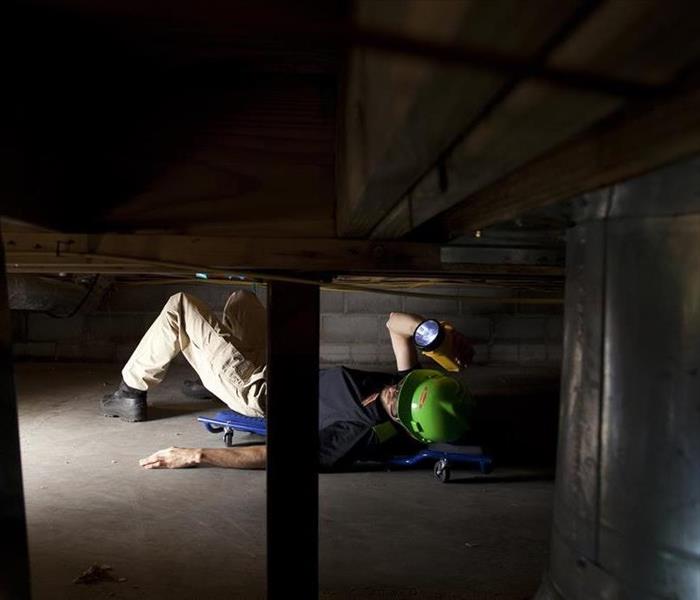 Asbestos can be hiding in your property. It is not dangerous unless it is disturbed, but knowing if you have to worry about it or not is step number 1
Asbestos can be hiding in your property. It is not dangerous unless it is disturbed, but knowing if you have to worry about it or not is step number 1
Asbestos has been being mined for the past 4000 years, but its popularity really bloomed during the industrial revolution and peaked during World War II. Asbestos was seen as a miracle mineral because it was resistant to fire, heat, electricity, chemical erosion, and it is inexpensive to mine. Today, asbestos can still be found in many homes and commercial properties, especially if it was built before 1980, often in the drywall, insulation, or ceiling tiles. Please do not attempt to remove asbestos yourself, it is extremely dangerous and should only be handled by a certified asbestos abatement professional.
Asbestos is actually an umbrella term that describes 6 long fibrous minerals, much like fiberglass, that when irritated can release millions of tiny “fibrils” into the air. These fibrils cannot be seen by the naked eye, tasted, or smelled, so they can easily be inhaled. When inhaled, the fibrils get stuck in a person’s lungs and never dissolve. Years of exposure and build up causes inflammation and scarring, the symptoms are not immediate, they often take 20-50 years to develop, resulting in life threatening diseases such as lung cancer, mesothelioma and asbestosis. Asbestos is still the leading cause of occupational cancer in the world.
Asbestos has been banned in many countries all around the world, including Canada, but surprising not all countries have followed suite. The United States has not banned asbestos due to business interests and Russia still mines asbestos; Russia mined over 1 million metric tonnes in 2015.
Community Chronicles: Rogers Run for L'Arche
4/8/2019 (Permalink)
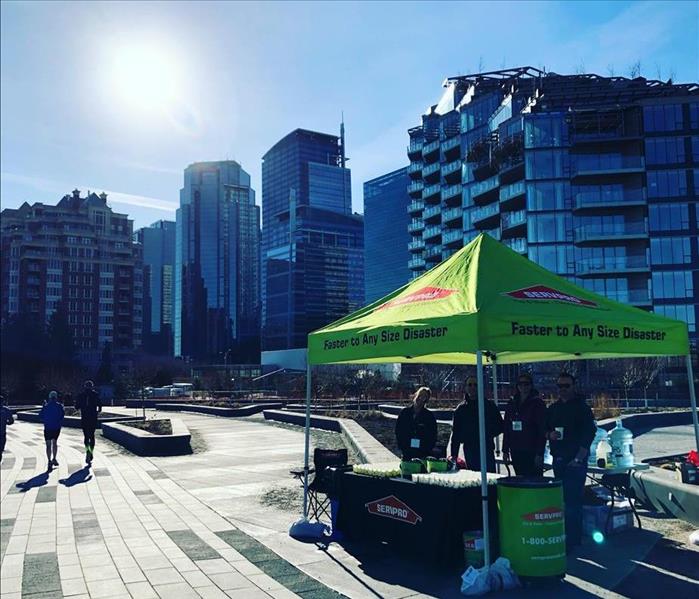 SERVPRO Water Station, helping thirsty runners during the Rogers Run for L'Arche
SERVPRO Water Station, helping thirsty runners during the Rogers Run for L'Arche
The SERVPRO of Calgary South team is not only dedicated to helping property owners recover after a disaster, we also love to help within our community. This March 2019, the SERVPRO of Calgary South team participated in the Rogers Run for L’Arche. L’Arche Calgary has five locations in the city offering a Supported Independent Living Program and a Day Program. L’Arche supports 29 people with developmental disabilities in Calgary and have been operating since 1973 (https://www.larchecalgary.org/). L’Arche is a global organization doing great work in 38 countries, including 29 communities within Canada.
The Rogers Run for L’Arche started in 2011 and since then has raised almost half a million dollars, with all proceeds going towards L’Arche. We were honoured to be able to hold down a water station for the day, cheering on every thirsty runner. It was truly a great event, for a great cause and SERVPRO of Calgary South is already looking forward to next year!
Spring Tips: General Spring Maintenance
3/19/2019 (Permalink)
The warmer temperatures are finally on the way after a long, cold winter. Spring is a beautiful time of year, but we must also remember spring cleaning entails a lot more than a thorough vacuum and dusting. For easy home maintenance it is important to stay on top of it and not let the chores build up season to season. In addition to saving time and money, regular maintenance is beneficial for your property because it can help you discover problems by identifying small issues before they become major repairs. Maintenance also helps with curb appeal because a well-maintained home has a more pleasant appearance increasing property value.
Here are a few more tips for your General Spring Maintenance:
1) Air Movement (Air Conditioner and Furnace)
It is a good idea to check your A/C and furnace before the first heatwave hits and your home becomes a sauna. Check all the connections, change the filter, and if necessary, have it serviced. You won’t regret it.
2) Attack the Attic
After a long and cold winter, it’s important to check your attic space to make sure no water has found its way in. You will also want to make sure no mice, insects, or other critters have nested over the winter, terrorizing your insulation. Check to make sure the insulation is dry (wet insulation is less effective) and look for signs of mould or water damage. Improper ventilation can cause condensation to buildup, become frost, and eventually result in water damage.
3) Browse the Basement
Changing season often lead to basement issues as, basements are often a hotspot for repairs. Check for cracks in the cement walls and look for signs of leaks. While you are down there, check the washing machine hoses for leaks or holes, inspect the basement windows for mould, leaks, or drafts, and watch out for signs of bugs or rodents.
5) Look for Leaks and Monitor for Mould
In addition to browsing the basement, looking for leaks and mold is vital in all areas of your home. Take the time to inspect all windows, doors, bathrooms, toilets, sinks, and other areas where water is prevalent. If you discover mould, take action immediately. If you have a large amount of mold, SERVPRO of Calgary South would be happy to help with your mould remediation.
6) Secure Smoke Signals
Frequently checking the smoke and carbon monoxide detectors should be a regular household activity, make sure they are working properly and change the batteries when necessary (check monthly, change annually). Check your fire extinguishers to ensure there are no leaks and the pin is in place and it is not expired. It is also important to store you fire extinguisher in an easily accessible place where everyone knows where it is.
Spring Tips: Exterior Maintenance
3/19/2019 (Permalink)
 Time to get your home ready for BBQ season, here are a few tips to help with you spring time maintenance.
Time to get your home ready for BBQ season, here are a few tips to help with you spring time maintenance.
With Spring approaching, it’s time to check your home and see if the wintery cold caused any damage to your home or building. Signs of winter damage start to show themselves once the weather warms up and the surrounding environment starts to thaw. This article will help you get out of winter hibernation and back into barbeque season! Here is a quick maintenance checklist focusing on the exterior of your building:
1) Start at the Top (Inspect the Roof)
A healthy roof is one of the most important parts of your home. Ensuring it is sturdy and sealed is central to keeping your entire home efficient. Damage to your shingles, flashing, or any leaks can quickly trickle down and affect other areas of your home. When looking at your shingles look for curled edges, tears, or loose stones in your gutters, these are all signs of damage and could be a signal for replacement.
It is also important to have proper drainage form your roof, this means cleaning you gutters and downspouts. Repair any holes in the gutters and clean out leaves and pine needles. Organic material can degrade in your gutter and create a thick muddy mess, stopping water from being properly redirected away from your property.
2) Check the Structure (Inspect the Foundation, Walls, Windows, and Doors)
Do a walk around of your home and check for cracks/holes in the foundation. as well as inspecting the exterior walls, siding, windows and door. If you identify a foundation issue, contact a specialist to take a look. When inspecting the windows and doors, pay special attention to the caulking and weather stripping, issues in the seal are often harder to find than obvious holes or tears. All of this will limit the chances of water using one of these pathways into your house and reduce your heating/AC bill.
3) Independent Structures (Garages, Sheds, Fences etc)
Make sure the garage door is functioning properly and has a strong seal at the bottom. Sweep and vacuum dust, dirt, and debris around the doors. Also make sure there is nothing that could fall off the ceiling and impede the doors from working properly. Looks for signs of cracked or split fencing boards, especially near any gates and ice can raise fence boards and make gates stick.
4) Spring Yard Cleanup
It is grass cutting season! Time to get that lawn mower out, change the oil, get the blade sharpened and have the yearly debate of what is the better way to cut the yard, side-to-side or up-and-down (My vote is for side-to-side) Now, head to your local hardware store to restock on supplies such as landscaping bags and grass seed. Don’t forget to pick up the tools you need to thatch, weed, and clean out your garden beds. Now that you are ready, fire up the BBQ, pull out the cooler, and invite for the family and friends.
For Immediate Service in Calgary, Call SERVPRO
3/12/2019 (Permalink)
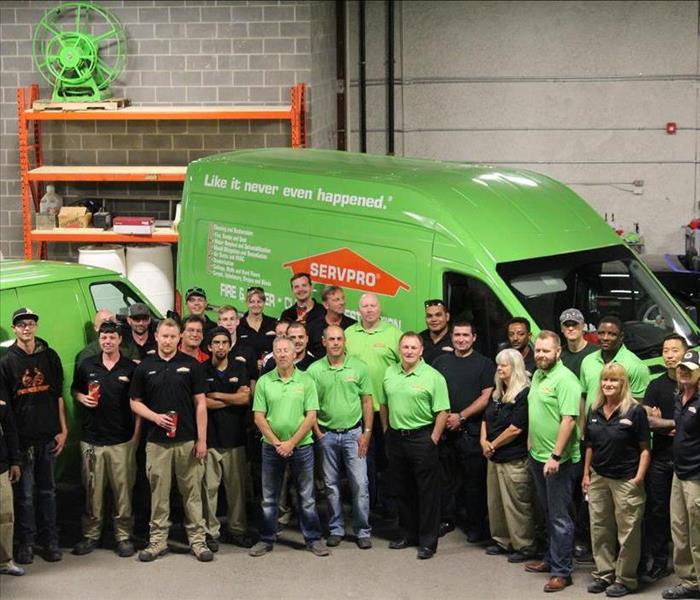 Calgary Residents: We provide immediate service day or night!
Calgary Residents: We provide immediate service day or night!
SERVPRO of Calgary South provides 24-hour emergency service and is dedicated to being faster to any-sized disaster in Calgary and surrounding area. We can respond immediately to your emergency and have the expertise to handle your restoration or cleaning needs.
- 24-Hour Emergency Service
- Faster to Any-Sized Disaster
- Highly Trained Restoration Technicians
- A Trusted Leader in the Restoration Industry
- Locally Owned and Operated
- Advanced Restoration and Cleaning Equipment
Have Questions? Call Us 24/7 – (403) 255-0202
Residential Services
Whether your Calgary home needs emergency flood damage or your upholstery cleaned, you can depend on us. Our technicians have extensive cleaning and restoration training and can make your property look its best. Learn more about our residential services:
- Water Damage Restoration
- Fire Damage Restoration
- Mold Remediation
- Storm Damage Restoration
- Cleaning Services
- Building/Reconstruction Services
Commercial Services
There's never a convenient time for fire or Water damage to strike your Calgary commercial property. Every hour spent cleaning up is an hour of lost revenue and productivity. So when the need arises for professional cleaning or emergency restoration services we have the training and expertise to respond promptly with highly trained technicians to get your property back to business. Learn more about our commercial services: Commercial Cleaning
- Commercial Water Damage Restoration
- Commercial Fire Damage Restoration
Calgary and Alberta Flood Prevention
2/28/2019 (Permalink)
 Calgary, Alberta Flood prevention and reaction tips
Calgary, Alberta Flood prevention and reaction tips
Floods happen and they can be extremely devastating to properties and disruptive to our everyday lives. Some are calling Alberta the “natural disaster capital” of Canada after a study commissioned by the Insurance Bureau of Canada shows that an increase in extreme weather is hitting Alberta insurance companies pretty hard. Not only does this cause a financial and personal burden for families and businesses owners, the livelihood of communities across the province are being affected. Wildfires, floods, hail storms, and other extreme weather conditions continue to sweep in each year causing millions of dollars in damage. Question is, what can we expect moving forward and how can Albertans protect themselves?
Don Forgeron, the President and CEO of Insurance Bureau of Canada made a speech in November of 2015 discussing the dire need of a National Flood program. Forgeron says “A national flood program, we believe, would offer a much more comprehensive and disciplined way to compensate people as a result of damage from flood.” This program would include new sewer and storm-water infrastructures around flood prone areas, create a “culture of flood preparedness” providing a comprehensive list of steps on how to flood proof their properties.
Will this National Flood Program move forward? We will have to wait and see. In the meantime, homeowners/property owners should take all the steps necessary to flood proof their homes and properties. Some of which include the following.
- Know if your home is built on Fill, clay, sand, or gravely soil as these materials can help prevent flood damage.
- Do you have an option to build elevated structures (columns or bearing walls) around your properties or more specifically the areas prone to flood damage?
- Observe the kind of materials of the structure of your house and make sure that it is properly sealed.
- Purchasing sandbags in the event of a flood are a great emergency tool to help prevent water from flowing into your home or property.
While all of these measures will help prevent severe damage in the event of a flood, home owners/property owners should still be educated about their insurance policies should they live in an area prone to flooding. Contact you Insurance company and educate yourself what kind of coverage you have and what is available.
As for a new national flood program, we will have to wait on new developments. Brenda Neufled reports that “IBC is proposing a framework for the financial management of flood risk, with shared responsibilities for the insurance industry, all tiers of government and consumers.” This could mean good news for Albertans living in flood plan areas. Keep an ear out as new aid might be available in the near future for those affected by floods or potential flood victims.
Albertans can also purchase overland flood insurance. This covers any water that flows on top of the land and enters the property from windows, doors, garages, and other openings. Contact your insurance provider today to see if overland flood insurance is right for your property.
Does your Calgary Home Have A Mold (Mould) Problem?
2/27/2019 (Permalink)
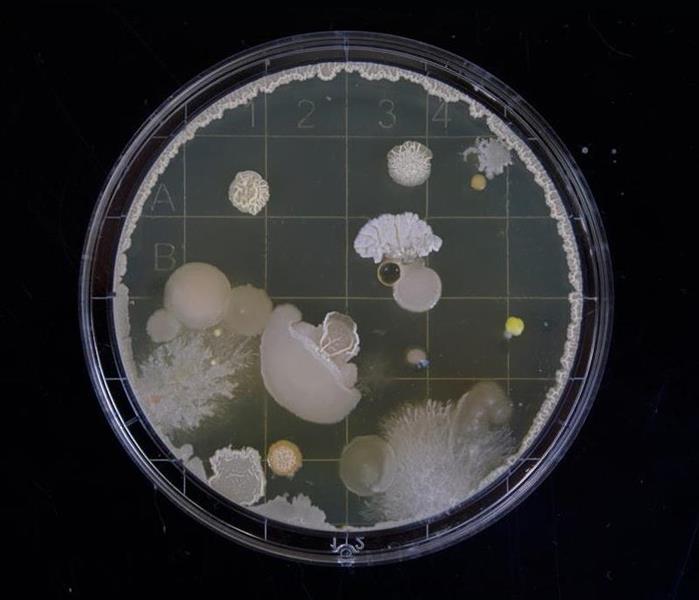 In Calgary, mold can spread through a home in as little as 48 hours.
In Calgary, mold can spread through a home in as little as 48 hours.
I know what you're going to ask, "Is it Mold or Mould?"
- In all senses of the word, both spellings are correct. "Mold is typically the American English spelling while "Mould" stems from British English. Being Canadian we all have the pleasure of questioning ourselves on adding that pesky little "U" to many words in our language (Labor or Labour, Favorite or Favourite, ajnd now Mold or Mould). No matter which way you spell it, if you see it give SERVPRO a call.
403-255-0202
Microscopic mold spores naturally occur almost everywhere, both outdoors and indoors. This makes it impossible to remove all mold from a home or business. Therefore, mold remediation reduces the mold spore count back to its natural safe level. Some restoration businesses advertise “mold removal” and even guarantee to remove all mold, which is a fallacy. Consider the following mold facts:
- Mold is present almost everywhere, indoors and outdoors.
- Mold spores are microscopic and float along in the air and may enter your home through windows, doors, or AC/heating systems or even hitch a ride indoors on your clothing or a pet.
- Mold spores thrive on moisture. Mold spores can quickly grow into colonies when exposed to water. These colonies may produce allergens and irritants.
- Before mold remediation can begin, any sources of water or moisture must be addressed. Otherwise, the mold may return.
- Mold often produces a strong, musty odor and can lead you to possible mold problem areas.
- Even higher-than-normal indoor humidity can support mold growth. Keep indoor humidity below 45 percent.
If your home or business has a mold problem, we can inspect and assess your property and use our specialized training, equipment, and expertise to remediate your mold infestation.
If You See Signs of Mold, Call Us Today – 403-255-0202 –
Our Highly Trained Restoration Specialists can restore your Calgary Home
2/27/2019 (Permalink)
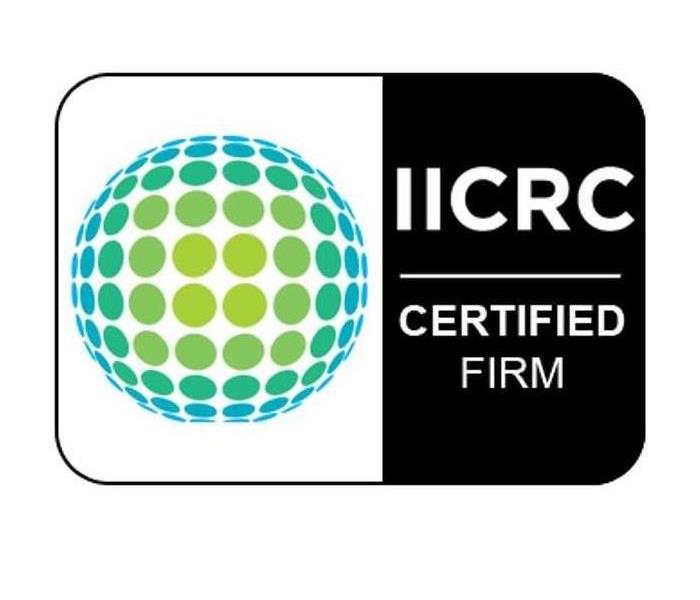 We are proudly an IICRC Certified Firm
We are proudly an IICRC Certified Firm
Industry standards are very important in business as they not only give the business a baseline of how to conduct business, they also protect the consumers by ensuring the company they choose is qualified.
SERVPRO of Calgary South is an IICRC firm. The Institute of Inspection, Cleaning and Restoration Certification (IICRC) creates the standards for the restoration industry and provides training and certification to restoration companies. IICRC Certified Firms have the right to display the IICRC Certified Logo.
IICRC Certified Firms must
• Present accurate information to consumers and conduct business with honesty and integrity.
• Require a technician on all jobs who has been formally trained and passed all required tests.
• Require a continuing education program to keep technicians up-to-date on the latest changes in the industry.
• Maintain liability insurance to protect all parties in the event of an accident.
• Maintain a written complaint policy and agree to Better Business Bureau or similar arbitration to resolve disputes, and accept the conclusions and recommendations of arbitration.
The IICRC Develops The Standards For The Restoration Industry
The IICRC has been the driving force in establishing the main industry standards and reference guides for professional carpet cleaning, water damage restoration and mold remediation. These IICRC standards take years to develop and require the coordination of experts in the field: manufacturers, industry organizations, insurance professionals, training schools, contractors, and public health professionals.
Every five years, the standards are reviewed and updated. The water damage restoration field changes rapidly with advancements in technology and science, and therefore the standards must evolve to keep pace.
About SERVPRO of Calgary South
SERVPRO of Calgary South specializes in the cleanup and restoration of residential and commercial property after a fire, smoke or water damage event. Our staff is highly trained in property damage restoration and we are an IICRC Certified Firm. We believe in continuous training: from initial and ongoing training at SERVPRO’s corporate training facility to regular IICRC-industry certification, rest assured our staff is equipped with the knowledge to restore your property.
Meet Our Crew
Keep Your Home Safe This Winter: Cold Weather Housekeeping Tips
2/27/2019 (Permalink)
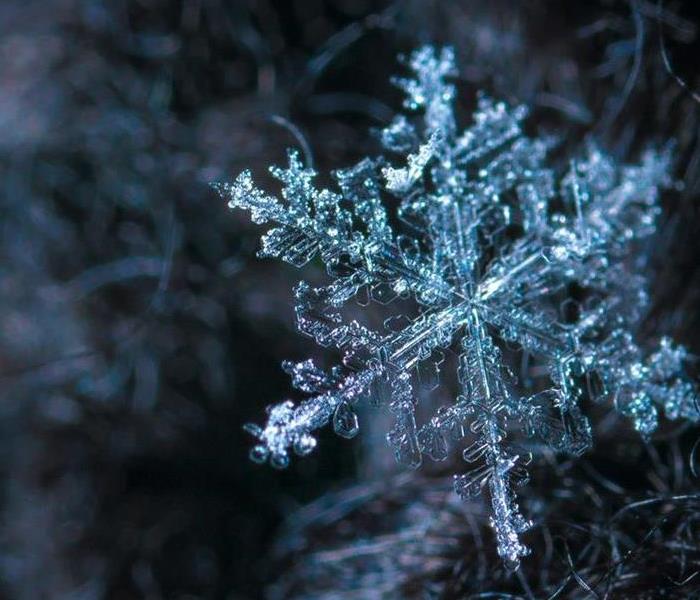 Cold winter weather tips and tricks
Cold winter weather tips and tricks
Keep Your Home Safe!
Since the severe weather has made an appearance (and doesn't seem to be going anywhere) across the country, it's only right if we give you Awesome Tips on keeping your home and business safe!
Tips for Preparing Your Home for Winter Weather
- Keep cabinet doors open during cold spells. This allows warm air to circulate around pipes
- Keep a slow trickle of water flowing through faucets, especially if the pipes for faucets, especially if the pipes for faucets run through unheated or un-insulated areas of your home.
- Consider shutting off outdoor faucets. Find the shut-off valve in the basement or crawl space and turn it to "off".
- If you follow the previous step, then open the outdoor faucet to help ensure it drains completely and the inner valve is shut off.
- Remove any attachments (hoses or sprinklers) from outdoor faucets, water can build up behind the attachment and freeze
- Ensure gutters are clean and secure. Leaves and debris accumulate, causing a damming effect on gutters, which could lead to roof problems and water damage.
- Proper maintenance of your furnace can help reduce the risk of puff backs.
If you follow these tips, especially on those extreme cold days, your home will stand a better chance against the cruel and cold winter weather.
Post-Winter Tips: At Home Winter Stain Clean-up
2/27/2019 (Permalink)
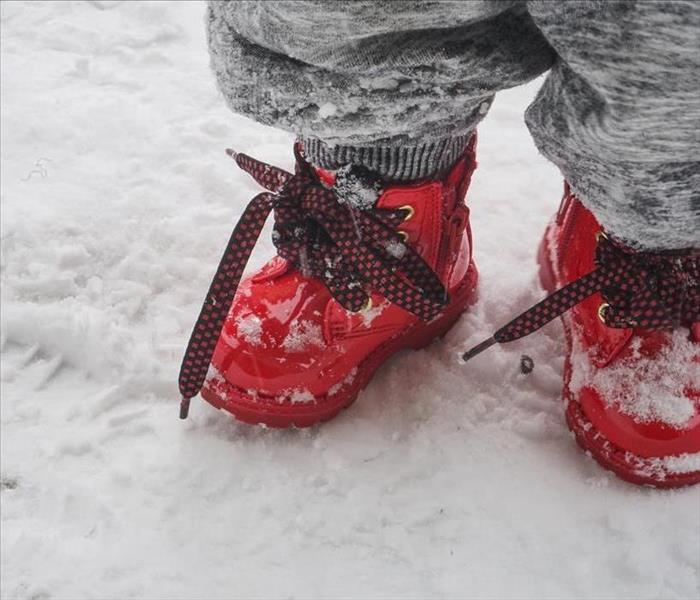 Don't let snowy or dirty boots stain your floors this winter
Don't let snowy or dirty boots stain your floors this winter
I'm sure everyone has run into the issues of tracking winter dirt inside, just take a look at your door mat. As the snow melts and freezes your floors attract more dirt, mud, salt and water.
Although many stains are better off to be removed right away, mud stains should be taken care of after waiting until the mud dries. Trying to clean mud right away causes the mess to spread, giving you a bigger and tougher stain to clean in the end. Drying the mud with a fan can speed up the process of removal. Cleanipedia gives us tips on how we can effectively remove mud stains and keep our carpet clean this season.
- Start off by using a vacuum hose to pick up the dry pieces of mud. This will get all of the excess crumbles out of the way to keep from smearing them across the floor. Move the hose gently across the area to ensure that you’re not pressing the dirt deeper into the carpet.
- There will most likely be some pieces of mud still stuck to the fibers of the carpet after using the vacuum. These remnants left over will need to be removed by scraping them out of the carpet using a gentle object, such as a spoon.
- Once you’ve scraped the dirt out, run the vacuum hose back over the area to pick up the remainder of the particles. If there are still particles left over, continue to scrape and vacuum until all dirt remnants have been removed.
- Now that all of the extra mud has been removed from the carpet, there is usually still a stain to be seen unfortunately. There are multiple different methods and removal products to help clean the stain, but even a simple warm water and laundry detergent mixture can do the trick. (Always make sure to try using the solution on a small, unseen portion of carpet first to test it out before applying it to a large area.)
- Once you have your mixture put together, soak the sponge into the solution and gently dab the area until the stain is completely covered and faded. Let the area dry naturally to see the outcome.
Cold Winter Weather Help: Why Pipes Burst and Why it's Important
2/27/2019 (Permalink)
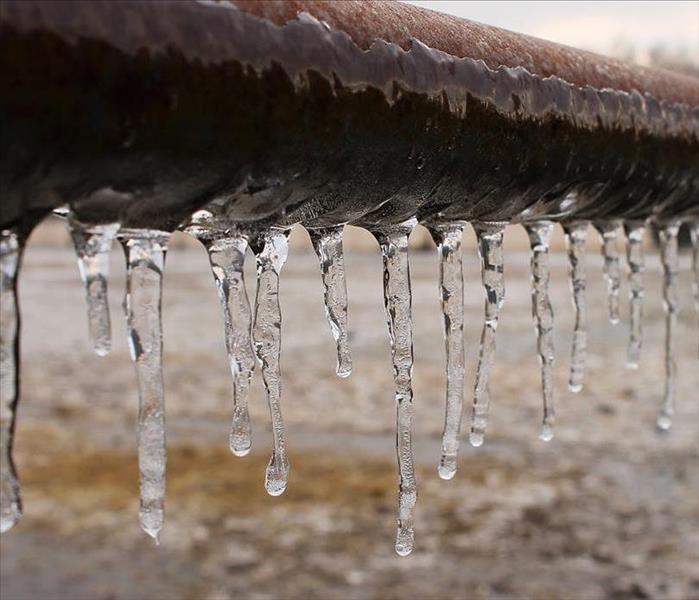 A frozen pipe can burst and cause a lot of damage to any home
A frozen pipe can burst and cause a lot of damage to any home
When water freezes, it expands. That’s why a can of soda explodes if it’s put into a freezer to chill quickly and forgotten. When water freezes in a pipe, it expands the same way. If it expands enough, the pipe bursts, water escapes and serious damage results.
WHY PIPES BURST?
Surprisingly, ice forming in a pipe does not typically cause a break where the ice blockage occurs. It’s not the radial expansion of ice against the wall of the pipe that causes the break. Rather, following a complete ice blockage in a pipe, continued freezing and expansion inside the pipe causes water pressure to increase downstream between the ice blockage and a closed faucet at the end. It’s this increase in water pressure that leads to pipe failure. Usually the pipe bursts where little or no ice has formed. Upstream from the ice blockage the water can always retreat back towards its source, so there is no pressure build-up to cause a break.
Water has to freeze for ice blockages to occur. Pipes that are adequately protected along their entire length by placement within the building’s insulation, insulation on the pipe itself, or heating, are safe.
MITIGATING THE PROBLEM
Water freezes when heat in the water is transferred to subfreezing air. The best way to keep water in pipes from freezing is to slow or stop this transfer of heat. Ideally, it is best not to expose water pipes to subfreezing temperatures, by placing them only in heated spaces and keeping them out of attics, crawl spaces and vulnerable outside walls. In new construction, proper placement can be designed into the building. In existing houses, a plumber may be able to re route at-risk pipes to protected areas, although this may not be a practical solution. If the latter is the case, vulnerable pipes that are accessible should be fitted with insulation sleeves or wrapping (which slows the heat transfer), the more insulation the better. It is important not to leave gaps that expose the pipe to cold air. Hardware stores and home centers carry the necessary materials, usually in foam rubber or fiberglass sleeves. Better yet, plumbing supply stores and insulation dealers carry pipe sleeves that feature extra thick insulation, as much as 1 or 2 inches thick. The added protection is worth the extra cost.
LETTING THE WATER RUN
Letting a faucet drip during extreme cold weather can prevent a pipe from bursting. It’s not that a small flow of water prevents freezing; this helps, but water can freeze even with a slow flow. Rather, opening a faucet will provide relief from the excessive pressure that builds between the faucet and the ice blockage when freezing occurs. If there is no excessive water pressure, there is no burst pipe, even if the water inside the pipe freezes. A dripping faucet wastes some water, so only pipes vulnerable to freezing (ones that run through an unheated or unprotected space) should be left with the water flowing. The drip can be very slight. Even the slowest drip at normal pressure will provide pressure relief when needed. Where both hot and cold lines serve a spigot, make sure each one contributes to the drip, since both are subjected to freezing. If the dripping stops, leave the faucet(s) open, since a pipe may have frozen and will still need pressure relief.
The Insurance Institute for Business and Home Safety have a full article HERE
If you notice a pipe burst, call a plumber immediately to have your water turned off. Any resulting leaks or water damage can be be handled by your friendly neighbourhood SERVPRO.
SERVPRO of Calgary South 24/7 Water Damage Response
2/20/2019 (Permalink)
Title: Calgary 24 Hour Emergency Water Damage Service
Category: Water Damage
Body:
SERVPRO of Calgary South is available 24 hours a day for water emergencies, large or small. When you are dealing with water damage, immediate action is crucial. A delay of just a few hours can greatly increase the severity of the water damage.
We Answer the Phone Ready to Help
Call Today (24/7) 403-255-0202
We understand that when you call us, you may be feeling confused, stressed, and vulnerable. You need an expert to guide you through this crisis. SERVPRO of Calgary South has the specific water damage training and experience to help you through this tough time. We specialize in water damage restoration—in fact, it's the cornerstone of our business.
What to Expect
When you call, we will ask several questions regarding your water damage emergency. These questions will help us determine what equipment and resources to bring, including how many trained SERVPRO Professionals may be needed.
Our SERVPRO Representative will ask several questions:
- Your name and contact information
- Your insurance information (if applicable)
- The street address of the water-damaged home or business
- When did the flooding or water damage occur?
- What caused the water damage (if known)?
- Is there electricity available (on-site)?
About SERVPRO of Calgary South
SERVPRO of Calgary South specializes in the cleanup and restoration of residential and commercial property after a fire, smoke or water damage event. Our staff is highly trained in property damage restoration. From initial and ongoing training at SERVPRO’s corporate training facility to regular IICRC-industry certification, rest assured our staff is equipped with the knowledge to restore your property.
Meet our Team:
https://www.SERVPROcalgarysouthab.com/employee-photos
When Storms or Floods hit Calgary, SERVPRO is ready!
8/12/2018 (Permalink)
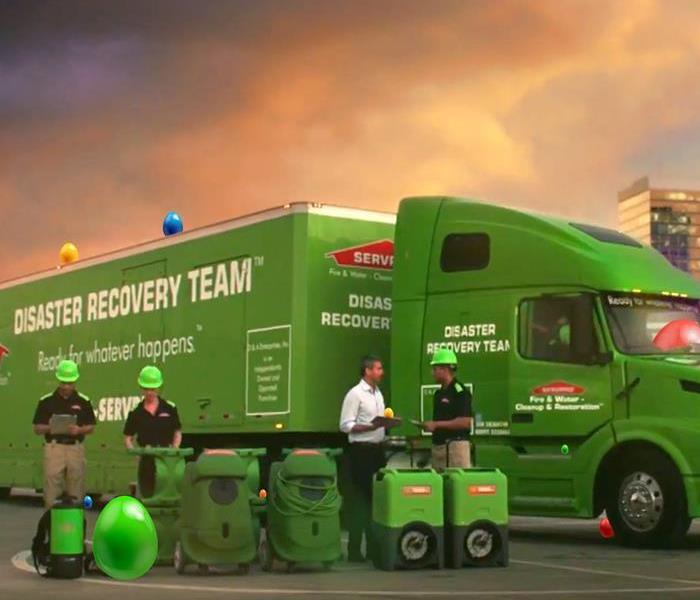 Our highly trained crews are ready to respond 24/7 to storm or flood damage in Calgary.
Our highly trained crews are ready to respond 24/7 to storm or flood damage in Calgary.
SERVPRO of Calgary South specializes in storm and flood damage restoration. Our crews are highly trained and we use specialized equipment to restore your property to its pre-storm condition.
Faster Response
Since we are locally owned and operated, we are able to respond quicker with the right resources, which is extremely important. A fast response lessens the damage, limits further damage, and reduces the restoration cost.
Resources to Handle Floods and Storms
When storms hit Calgary, we can scale our resources to handle a large storm or flooding disaster. We can access equipment and personnel from a network of 1,650 Franchises across North America and elite Disaster Recovery Teams that are strategically located throughout the Country.
Have Storm or Flood Damage? Call Us Today 403-255-0202.
SERVPRO of Calgary South Smoke and Soot Cleanup
5/21/2018 (Permalink)
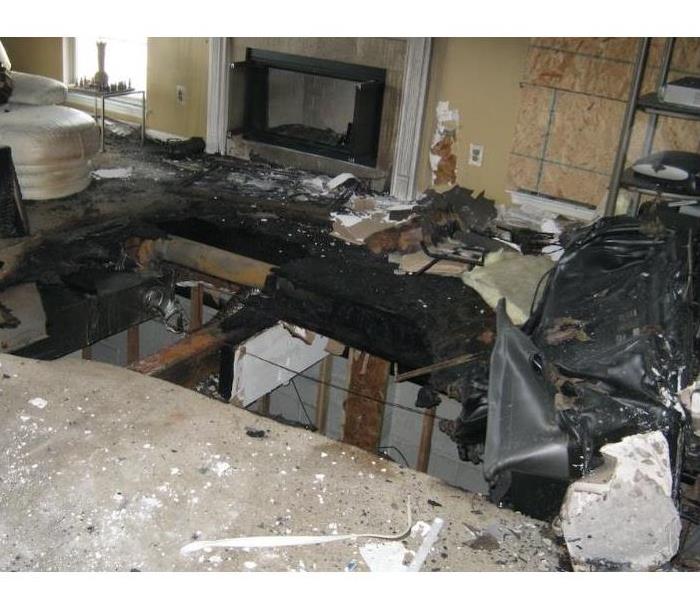 Smoke and Soot Damage Can Cause a Pervasive Odor in Your Home.
Smoke and Soot Damage Can Cause a Pervasive Odor in Your Home.
Smoke and soot are very invasive and can penetrate various cavities within your home, causing hidden damage and odor. Our smoke damage expertise and experience allows us to inspect and accurately assess the extent of the damage to develop a comprehensive plan of action.
Smoke and soot facts:
- Hot smoke migrates to cooler areas and upper levels of a structure.
- Smoke flows around plumbing systems, seeping through the holes used by pipes to go from floor to floor.
- The type of smoke may greatly affect the restoration process.
Different Types of Smoke
There are two different types of smoke–wet and dry. As a result, there are different types of soot residue after a fire. Before restoration begins, SERVPRO of Calgary South will test the soot to determine which type of smoke damage occurred. The cleaning procedures will then be based on the information identified during pretesting. Here is some additional information:
Wet Smoke – Plastic and Rubber
- Low heat, smoldering, pungent odor, sticky, smeary. Smoke webs are more difficult to clean.
Dry Smoke – Paper and Wood
- Fast burning, high temperatures, heat rises therefore smoke rises.
Protein Fire Residue – Produced by evaporation of material rather than from a fire
- Virtually invisible, discolors paints and varnishes, extreme pungent odor.
Our Fire Damage Restoration Services
Since each smoke and fire damage situation is a little different, each one requires a unique solution tailored for the specific conditions. We have the equipment, expertise, and experience to restore your fire and smoke damage. We will also treat your family with empathy and respect and your property with care.
Have Questions about Fire, Smoke, or Soot Damage?
Call Us Today! 403-255-0202
Faster to your Calgary Water Damage Event
4/29/2018 (Permalink)
Flooding and water emergencies don’t wait for regular business hours and neither do we. SERVPRO of Calgary South provides emergency cleaning and restoration services 24 hours a day, 7 days a week—including all holidays.
Faster To Any Size Disaster
Flooding and water damage is very invasive. Water quickly spreads throughout your home and gets absorbed into floors, walls, furniture, and more. SERVPRO of Calgary South arrives quickly and starts the water extraction process almost immediately. This immediate response helps to minimize the damage and the cleaning and restoration costs.
Need Emergency Service? Call Us 24/7 at 403-255-0202
Water Damage Timeline
Within Minutes:
- Water quickly spreads throughout your property, saturating everything in its path.
- Water is absorbed into walls, floors, upholstery, and belongings.
- Furniture finishes may bleed, causing permanent staining on carpets.
- Photographs, books, and other paper goods start to swell and warp.
Hours 1 to 24:
- Drywall begins to swell and break down.
- Metal surfaces begin to tarnish.
- Furniture begins to swell and crack.
- Dyes and inks from cloth and paper goods spread and stain.
- A musty odor appears.
48 Hours to 1 Week:
- Mold and mildew may grow and spread.
- Doors, windows, and studs swell and warp.
- Metal begins to rust and corrode.
- Furniture warps and shows signs of mold.
- Paint begins to blister.
- Wood flooring swells and warps.
- Serious biohazard contamination is possible.
More Than 1 Week:
- Restoration time and cost increase dramatically; replacing contaminated materials and structural rebuilding may be extensive.
- Structural safety, mold growth, and biohazard contaminants pose serious risks to occupants.
About SERVPRO of Calgary South
SERVPRO of Calgary South specializes in the cleanup and restoration of residential and commercial property after a fire, smoke or water damage event. Our staff is highly trained in property damage restoration. From initial and ongoing training at SERVPRO’s corporate training facility to regular IICRC-industry certification, rest assured our staff is equipped with the knowledge to restore your property.
Holiday Fire Safety Tips
12/18/2016 (Permalink)
To ensure a Merry Christmas and fire safe Holiday Season for everyone, the Saint John Fire Department suggests the following fire safety guidelines be observed:
The Kitchen
Grease and fat fires are a leading cause of home fires in Canada, so be extra careful when doing this kind of cooking. Here's what to do if grease in a pot or pan catches fire:
- Smother the flames by covering the pan with a lid;
- Turn off the heat immediately;
- Use baking soda (flour can be explosive) on shallow grease fires;
- Never turn on the overhead fan, as this could spread the fire;
- Never throw water on a grease fire.
The Christmas Tree
Get a freshly cut tree. It will stay green longer and be less of a fire hazard. Try to pick a tree with a strong green colour and noticeable fragrance.
Always test for freshness before buying. A tree with high moisture content is safer. Very few needles should fall when the butt of the tree is tapped on the ground; needles should bend, not break; and the stump should be sticky with resin.
Place the tree in a stand that will hold 2 to 3 litres of water and top it up daily. Make sure it is always immersed in water: If water drops below the trunk, the stem may reseal itself, requiring a fresh cut. Use a tree stand that has widespread legs for better balance.
Do not set your tree up near a heat source such as a radiator, television, fireplace, heating duct or sunny window. It should not block doors.
Never use lighted candles on the tree.
Remove the tree within 10 to 14 days. After that amount of time in a heated building, even the freshest tree can start to dry out.
Decorations
- Choose decorations that are flame-retardant, non-combustible and non-conductive.If there are young children or pets in your home, avoid very small decorations.
- Avoid using angel hair (glass wool) together with spray-on snowflakes. This combination is highly combustible.
- Do not use metallic ornaments on the tree. If they make contact with defective wiring they could become a shock hazard.
Lights
- Use Canadian Standards Association (CSA) certified light strings/sets.
- Use the proper lights for the environment. Indoor light strings/sets should not be used outdoors because they lack weatherproof connections. Some outdoor light strings/sets burn too hot indoors.
- Inspect light strings/set before use. Check for cracked bulbs and for frayed, broken or exposed wires, and discard if faulty.
- Do not use electric light strings/sets on metallic trees. A faulty system could energize the tree and shock or electrocute anyone coming into contact. Illuminate metallic trees with colored floodlights placed at a safe distance from the tree and out of reach.
- Turn off all tree and display lights before retiring for the night or before leaving the house.
Candles
- Place candles away from absolutely anything that could catch fire.
- Never leave burning candles unattended.
- Burn them only when a responsible adult is overseeing the flame.
- Put candles in sturdy holders on a stable surface, well away from drafts, curtains, children and pets.
- Snuff them out before leaving the room or going to sleep.
The Fireplace
- Never burn gift wrappings, boxes, cartons, or other types of packing in the fireplace. They burn too rapidly and generate far too much heat.
- Don't hang Christmas stockings from the mantel when the fireplace is in use.
- Always use a screen in front of the fireplace to protect against flying sparks.
- Never use gasoline or any other flammable liquids to start a fire.
- Use only seasoned and dried wood.
- Never leave the fire unattended or let it smolder.
- Clean the ashes regularly. Place the ashes in a metal container and store outside away from flammable materials.
- Don't use Christmas trees for firewood.
Electrical Outlets
- There is often a tendency to overload wall outlets during the holiday season. This is an unsafe practice and should be avoided even for short durations.
- Inspect all cords before using. Make sure they are CSA certified. Look for loose connections or frayed or exposed wire. Discard any defective cords. Read the labels and manufacturer's instructions to ensure proper use.
- Insert plugs fully into outlets. Poor contact may cause overheating or shock.
- To avoid possible overheating, do not coil or bunch an extension cord which is in use and do not run it under carpets or rugs.
Tips provided by the Alberta Fire Safety Association
Water Damage in a Nutshell
8/24/2016 (Permalink)
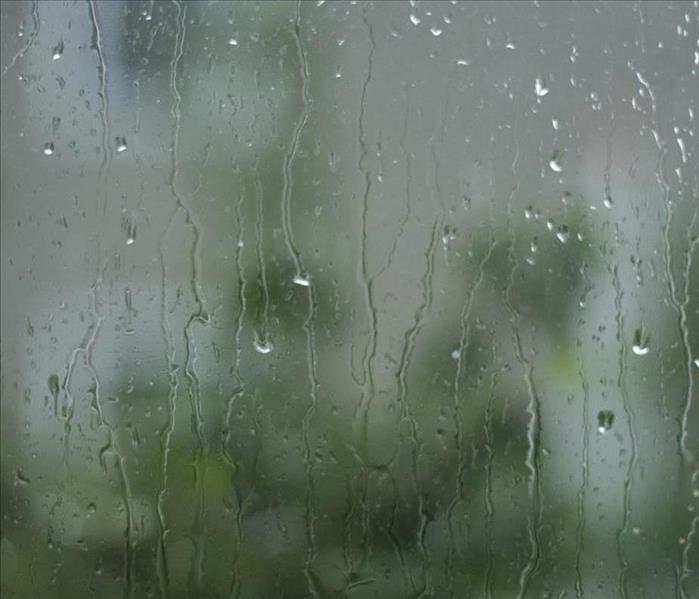 A wet and rainy season in Alberta.
A wet and rainy season in Alberta.
Preventing water damage will save you many headaches and is easier than dealing with the cleanup and repairs. We do not like to think about it, but water damage can cause severe damage to your property. It weakens the foundation and the very core that holds your property together.
You have heard about core strength in your body. Well, water damage hits at the core strength of your house, eventually causing severe structural damage. Damp wood invites termites and carpenter ants; plus, it causes mould and mildew.
Here are 3 easy prevention tips
These tips are easy things to do that will give you piece of mind the next time heavy storms hit.
- Ensure Good Drainage
Poor drainage weakens your foundation, causing cracks, uneven settling, and pathways for water to enter your home.
- Clean your gutters routinely. A clogged gutter and drains will send cascades of water down the side of your house, damaging your siding and foundation.
- Ensure your downspouts direct water 5 to 10 feet away from your house.
- Make sure your yard is sloped at least 6 inches over a 10-foot span away from your foundation.
- Check for Water Leaks
Persistent leaks lead to mould, mildew, rot, and even termites and carpenter ants (they like chewing wet wood, since it is soft).
- Check for dark spots under pipes inside sink cabinets, stains on ceilings, toilets that rock, and of course drips.
- At least once a year, inspect your roof. Repair any missing, loose, and or damaged shingles.
- Repair any cracked caulking and check for leaks around flashing.
- Know what to do should water damage occur
Water damage is all about action. Acting fast will save you time and unnecessary costs. Contact SERVPRO experts immediately will help our team to restore rather than replace. What you can do until SERVPRO arrives
- Remove art objects to a safe, dry place & gather loose items from floors.
- Remove coloured rugs and upholstery from wet carpeting to prevent stains.
- Do not turn on ceiling fixtures if the ceiling is wet, and keep out of rooms where ceilings are sagging. More tips here: http://www.SERVPROcalgarysouthab.com/water-damage-tips
SERVPRO Alberta Emergency Contacts
Calgary: 403.255.0202 | Edmonton: 780.784.7777
Alberta Flood Preparation
6/29/2016 (Permalink)
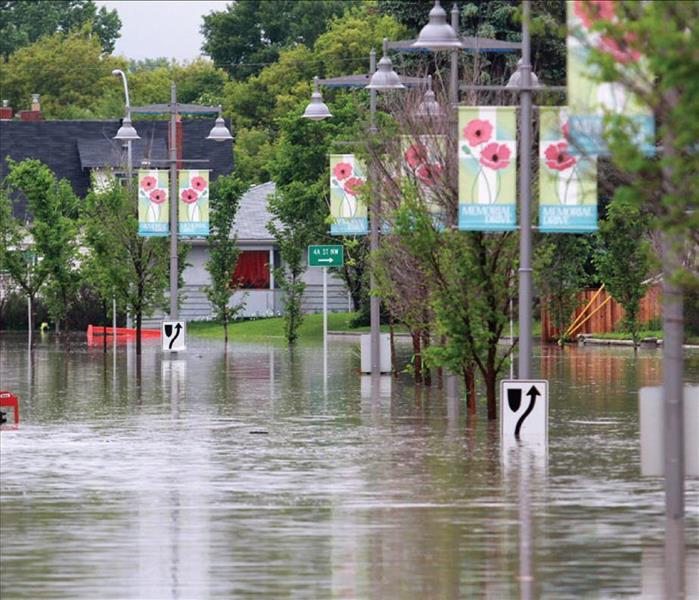 Alberta Flood
Alberta Flood
Some are calling Alberta the “natural disaster capital” of Canada after a study commissioned by the Insurance Bureau of Canada shows that an increase in extreme weather is hitting Alberta insurance companies pretty hard. Not only does this cause a financial burden for families and businesses owners, the livelihood of communities across the province are being affected. Wildfires, floods, hail storms, and other extreme weather conditions continue to sweep in each year causing millions of dollars in damage. Question is, what can we expect moving forward and how can Albertans protect themselves?
Don Forgeron, the President and CEO of Insurance Bureau of Canada made a speech in November of 2015 discussing the dire need of a National Flood program. Forgeron says “A national flood program, we believe, would offer a much more comprehensive and disciplined way to compensate people as a result of damage from flood.” This program would include new sewer and stormwater infrastructures around flood prone areas, create a “culture of flood preparedness” providing a comprehensive list of steps on how to flood proof their properties.
Will this National Flood Program move forward? We will have to wait and see. In the meantime, homeowners/property owners should take all the steps necessary to flood proof their homes and properties. Some of which include the following.
- Know if your home is built on Fill, clay, sand, or gravely soil as these materials can help prevent flood damage.
- Do you have an option to build elevated structures (columns or bearing walls) around your properties or more specifically the areas prone to flood damage?
- Observe the kind of materials of the structure of your house and make sure that it is properly sealed.
- Purchasing sandbags in the event of a flood are a great emergency tool to help prevent water from flowing into your home or property.
While all of these measures will help prevent severe damage in the event of a flood, home owners/property owners should still be educated about their insurance policies should they live in an area prone to flooding. Contact you Insurance company and educate yourself what kind of coverage you have and what is available.
As for a new national flood program, we will have to wait on new developments. Brenda Neufled reports that “IBC is proposing a framework for the financial management of flood risk, with shared responsibilities for the insurance industry, all tiers of government and consumers.” This could mean good news for Albertans living in flood plan areas. Keep an ear out as new aid might be available in the near future for those affected by floods or potential flood victims.
Sponsoring – The Mike Weir Miracle Golf Drive for Kids
6/15/2015 (Permalink)
We are proud to sponsor The Mike Weir Miracle Golf Drive for Kids, on June 21- 22, 2015! Don't miss out on this once in a lifetime tournament that is sure to inspire our community.
In 2007, The Mike Weir Foundation and Children’s Miracle Network set an ambitious goal to raise $10 million for Canadian pediatric healthcare.
Since that time, the Mike Weir Miracle Golf Drive for Kids has raised more than $4,788,000 to support innovative programs, state-of-the-art equipment, and ground-breaking pediatric research at children’s hospitals across the country.
In June 2015, the Mike Weir Miracle Golf Drive for Kids is coming to Calgary! All proceeds from this exciting two-day golf event will benefit the Alberta Children’s Hospital.
Learn more about Alberta Children's Hospital Foundation & Mike Weir Foundation and tournament details: www.childrenshospital.ab.ca/MikeWeir
Prevent Frozen Pipes this Winter
12/1/2014 (Permalink)
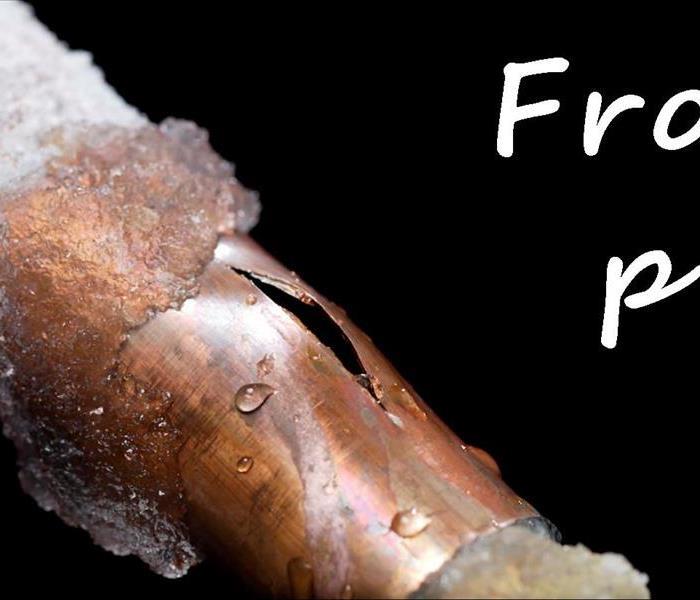 Prevent water damage this winter & stop pipes from freezing.
Prevent water damage this winter & stop pipes from freezing.
Frozen pipes are a leading cause of water damage in the colder months of the year. Why?
Water has the unfortunate property in that as it freezes, it expands. This can affect all types of water lines, whether metal, plastic, or PVC. Simply, all pipes are subject to bursting given the right amount of pressure. As the water freezes, it can expand the pipe, eventually causing a hairline crack or a complete break. At that point the portion unfrozen will then provide a continual stream of water until shut off, causing water damage throughout the property.
How can I prevent my pipes from freezing or bursting?
If possible, make sure that all pipes and supply lines on exterior walls are insulated. Exterior walls will be much colder than interior walls given their location. Additionally, all water lines in basements and crawlspaces need to be insulated as they will be subjected to very cold temperatures. Simple foam insulation wrap can help prevent your pipes from freezing.Make sure all outdoor hoses are removed from exterior hose bibs.Always keep your heating unit on and operational, even when away on vacation. If leaving for an extended period of time, set your thermostat to no colder than 55 degrees to ensure that your home has enough heat to properly keep interior pipes from freezing.Keep garage doors closed if you have water supply lines located in that area. In extreme cases of sever cold for extended periods of time, ensure that exposed pipes are insulated. Space heaters (placed away from anything flammable) can provide heat and warmth to combat cold environments in garage areas.If you notice very low water pressure from water supply areas, a frozen pipe could be the cause. Immediate action should be taken to identify the problem.What should I do if my pipes are already frozen?
Turn on all the faucets with warm water, not hot, to a slow drip. This will help in supplying warmer water to the area without causing an abrupt temperature change. It will also help you in determining the location of the freeze.Apply exterior heat to the frozen section of pipe. This can be done with a hair dryer, electric heating pad, space heater, and towels soaked in warm water wrapped around the pipe. NEVERuse open flame devices, as this can be a major fire hazard.Keep continual heat on the area until water flow is restored to normal.Once restored, try to determine why the area froze. It may be as simple as adding insulation, sleeve wraps, UL listed heat tape, or other form of insulation.If you cannot locate, find, or properly thaw your pipes, call a professional plumber to assist.What if my pipes burst and caused damage?
If your pipes have busted, cracked, or began leaking, immediate action should be taken to ensure that water damage could be minimalized to you property. Soak up as much water as possible with towels or extract with a shop vac. It's often necessary to have professionals like SERVPRO come in and completely mitigate the water. Home drying efforts can help reduce damages, but will not get rid of all moisture and humidity. It's important to ensure that your property is completely dry and dehumidified to prevent secondary damage from ruining your home, flooring, furnishings, or building materials. Call SERVPRO today if you've had water damage from a pipe leak, and we'll work with you and/or your insurance company to make sure that your home is restored correctly!




 24/7 Emergency Service
24/7 Emergency Service

















